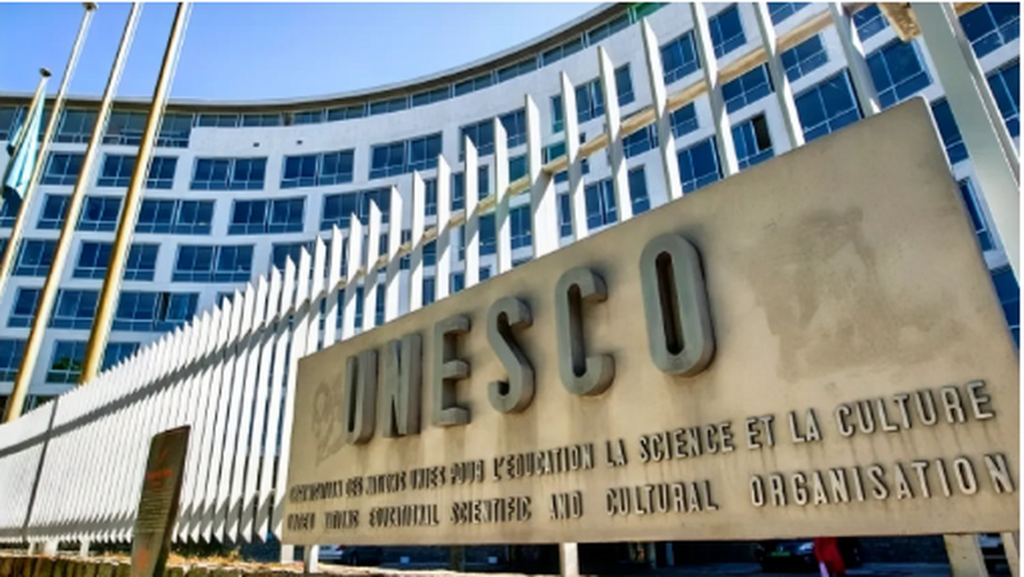
On April 17, 2025, UNESCO announced the new inscriptions to the Memory of the World Register. China’s nomination “Shaolin Temple Stele Collection (566–1990)” was successfully inscribed! This signifies that this treasured library of stone inscriptions, comprising 499 precious stone steles spanning 1424 years (from the 2nd year of Tian Tong in the Northern Qi Dynasty [566 AD] to 1990), has officially joined the ranks of world-class documentary heritage under collective human protection.
This is not only the highest recognition of the millennia-old historical and cultural value of Shaolin Temple, but also marks the global acknowledgment of this “Open-air Archive” carved in stone, which carries the essence of Chan wisdom, the origins and lineage of Shaolin Kung Fu, East-West cultural exchange, and the inclusive symbiosis of Chinese culture. Like living fossils transcending time, they silently narrate the vicissitudes, intellectual collisions, and dialogues of civilizations from the Northern Dynasties to the contemporary era.
I. Millennia-Old Stone Repository: Witness to World Civilization
The Shaolin Temple Stele Collection can be described as a three-dimensional “encyclopedia” carved in stone, its value extending far beyond that of mere stone art:
- An Unbroken Historical Scroll: The 499 steles form a globally rare, unbroken sequence of stone inscriptions spanning 1424 years. They record political upheavals, economic systems, religious evolution, military activities, natural changes (e.g., climate disasters), and the lineage of Shaolin Kung Fu across successive dynasties.
- Record of Global Civilizational Dialogue: These steles are tangible witnesses to ancient Eastern cultural exchange. The inscriptions cover multiple languages including Chinese, Sanskrit, Mongolian, ‘Phags-pa script, and Japanese (epigraphs). They clearly document historical facts of monks from India (Tianzhu), Japan, Korea (Silla), Mongolia, and other countries studying and exchanging at Shaolin Temple.
- For example: The “Stele Eulogizing the Virtues of Master Xian of the Chan School” written by the eminent Japanese monk Shōgen, and the Sanskrit sutra pillars left by Indian monks, are vivid testimonies to Sino-foreign cultural exchange.
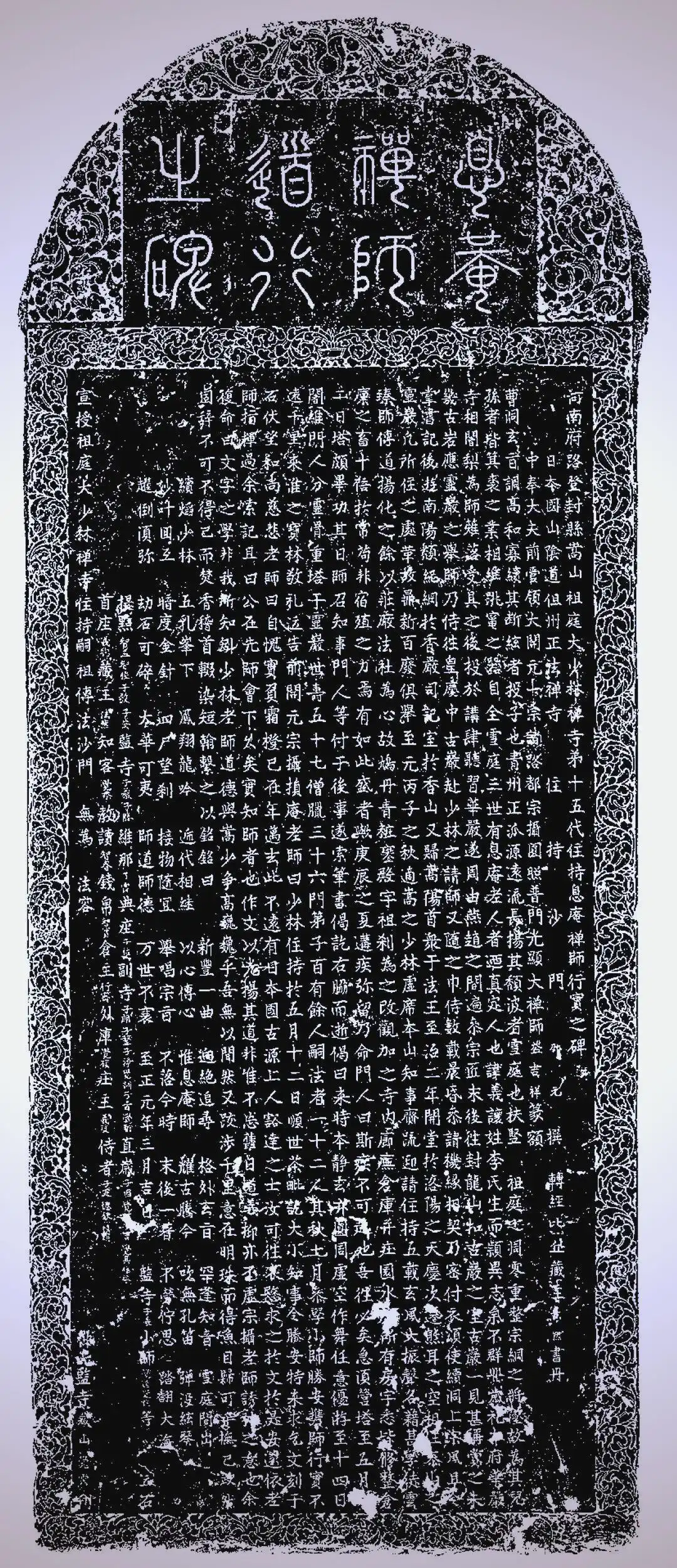
- For example: The “Stele Eulogizing the Virtues of Master Xian of the Chan School” written by the eminent Japanese monk Shōgen, and the Sanskrit sutra pillars left by Indian monks, are vivid testimonies to Sino-foreign cultural exchange.
- Treasure Trove of Art: More than just historical carriers, they are a concentrated embodiment of the essence of Chinese calligraphy, sculpture, and painting.
- Highlight Examples:
- Stele of the Harmonious Convergence of Three Teachings and Nine Schools Inscription and Praise (Hunyuan Sanjiao Jiuliu Tu Zan Bei): In a unique way, integrates the three sages representing China’s Confucianism, Buddhism, and Daoism – Confucius, Śākyamuni, and Laozi – into one figure within a single image (Hunyuan Tu). It profoundly interprets the “harmony and unity” (He He) and inclusivity of Chinese culture. This image has also become the design source for the current Shaolin Temple logo.
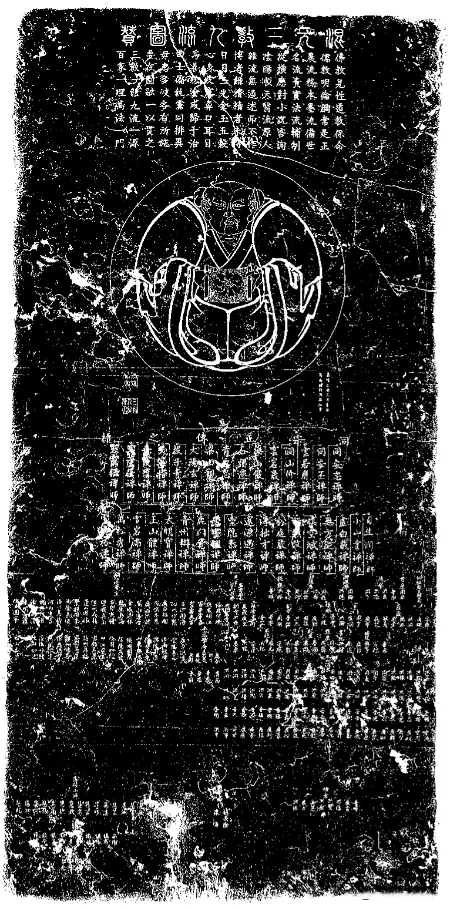
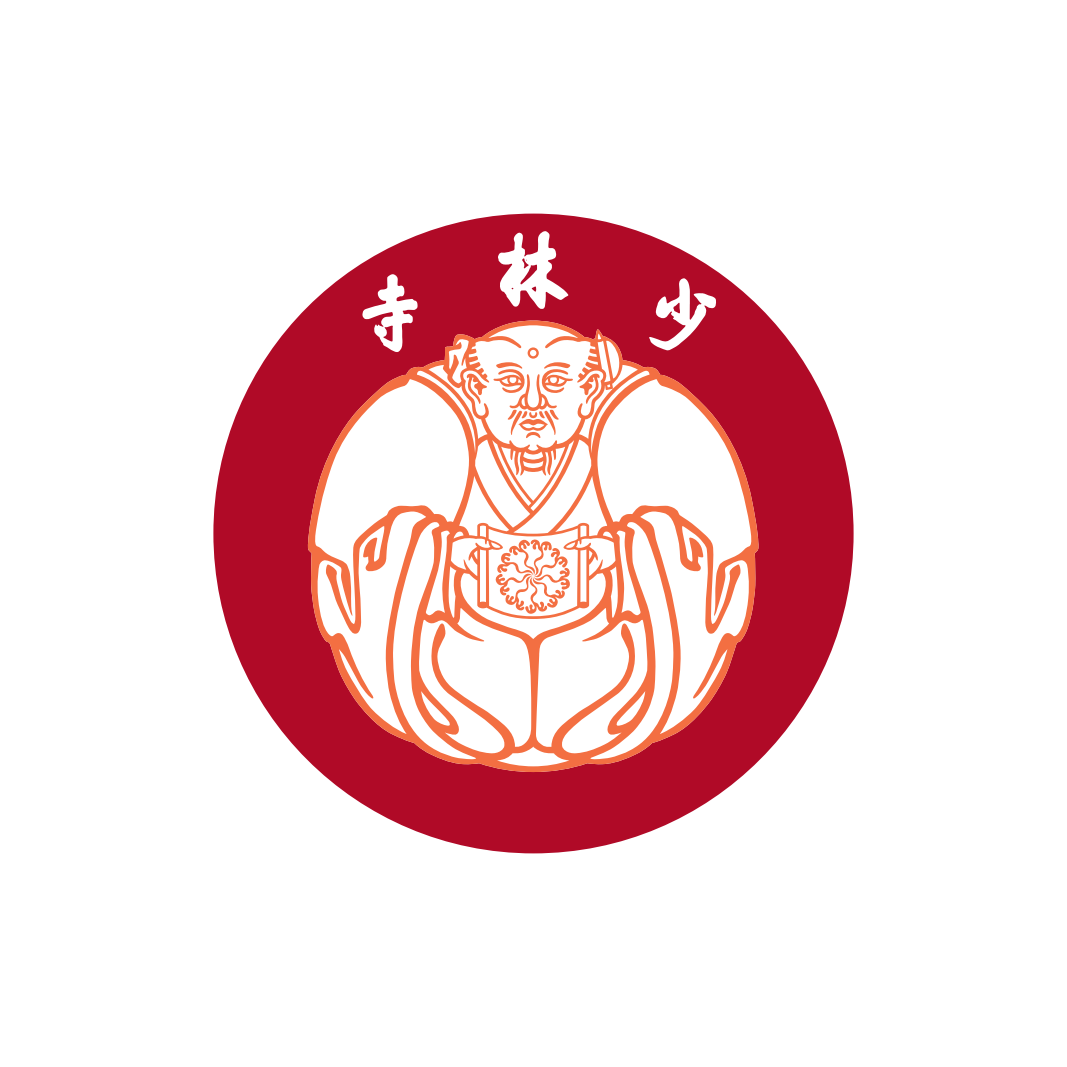
- Imperial Tang Songshan Shaolin Temple Stele (Huang Tang Songyue Shaolin SiBei): Features an inscription heading (“Li Shu”) personally written by Emperor Xuanzong of Tang reading “Imperial Writing of Emperor Taizong the Civil and Martial Emperor”. Within the main text, the two characters “世民” (Shimin) are engraved in the cursive hand of Emperor Taizong of Tang, Li Shimin. The story of “Thirteen Cudgel-Wielding Monks Rescuing the Prince of Qin” recorded on this stele served as the inspiration for the movie “Shaolin Temple”, vividly depicting the interactive relationship between Buddhist monasteries and secular power.
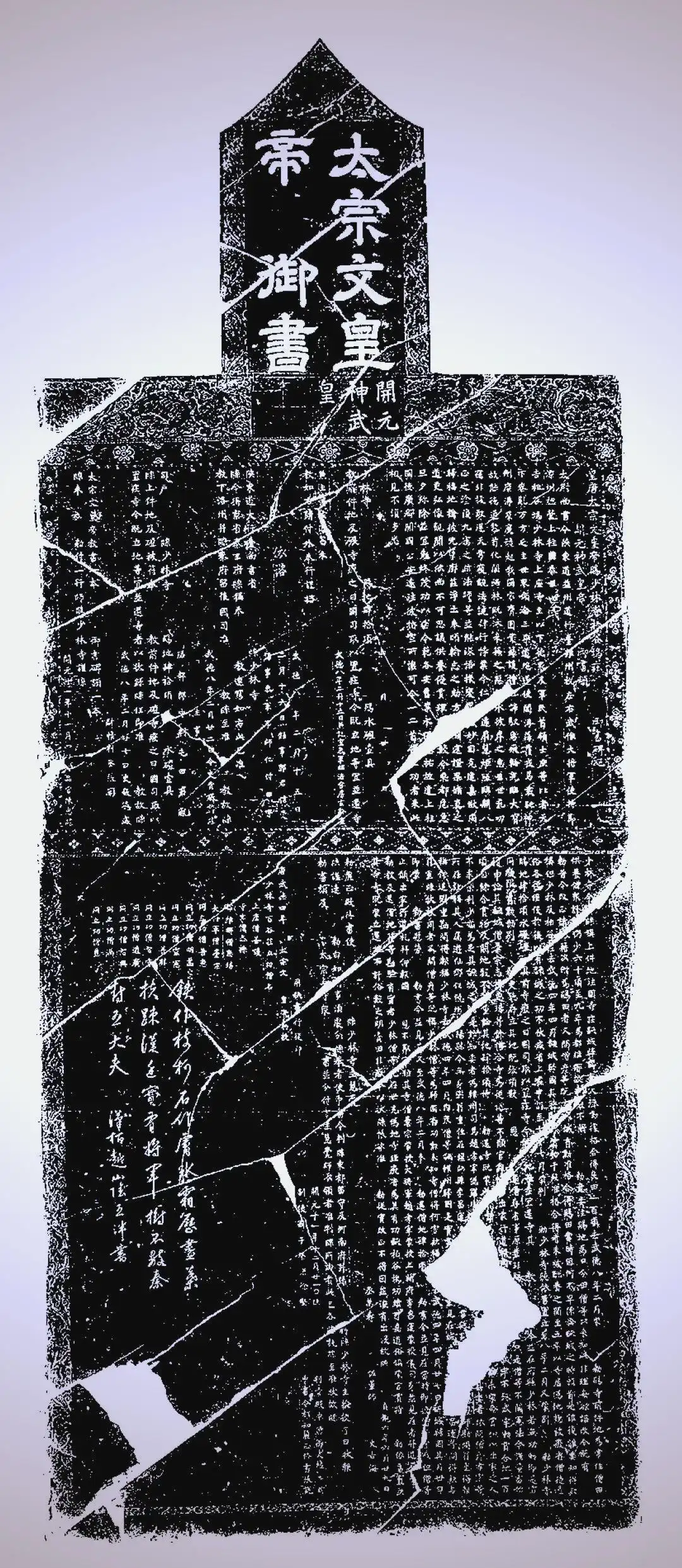
- Stele of Bodhidharma Crossing the Yangtze on a Reed (Damo Yi Wei Du Jiang Bei): Depicts the legendary story of Bodhidharma, the First Patriarch of Chan, “crossing the Yangtze on a single reed” through vivid line engraving. This deeply iconic image, embedded in the memory of Shaolin Temple culture and Chan transmission, is one of the most classic visual representations of Bodhidharma, symbolizing the determination to transmit Dharma eastward and transcendental wisdom.
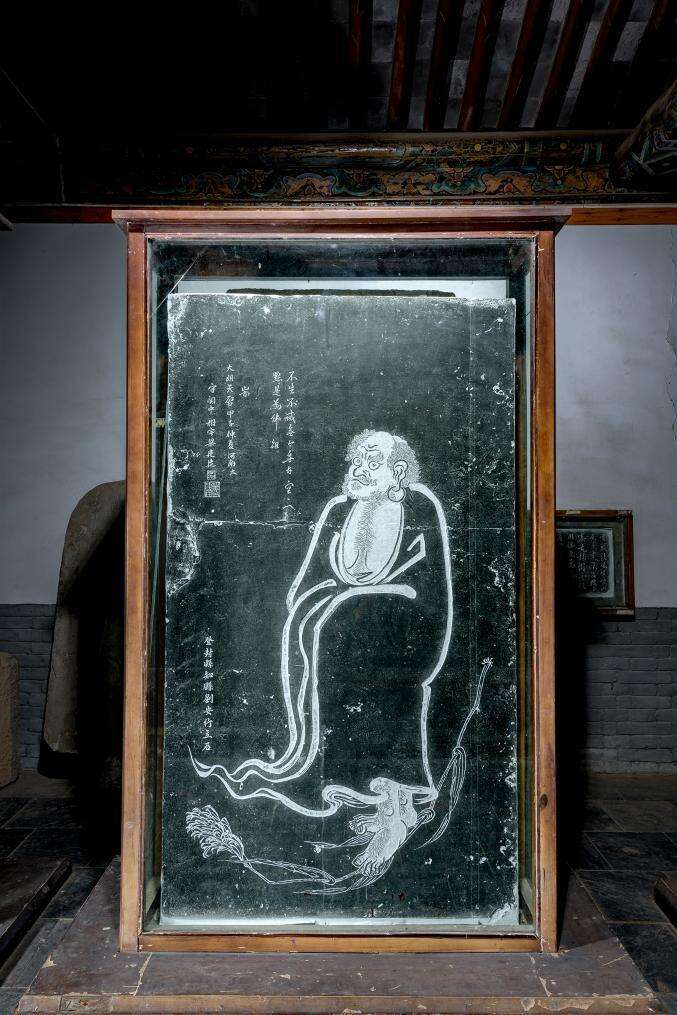
- Stele of One Buddha with Two Bodhisattvas (Yi Fo Er Pusa Zaoxiang Bei): Showcases exquisite Buddhist stone carving art. The front, back, or sides of the stele often feature solemn images of the Buddha flanked by two attendant Bodhisattvas (commonly Mañjuśrī and Samantabhadra). With fluid lines and exquisite craftsmanship, it reflects the Buddhist artistic style and devotional ethos of specific historical periods, offering a silent interpretation of the monastery’s core religious spirit.
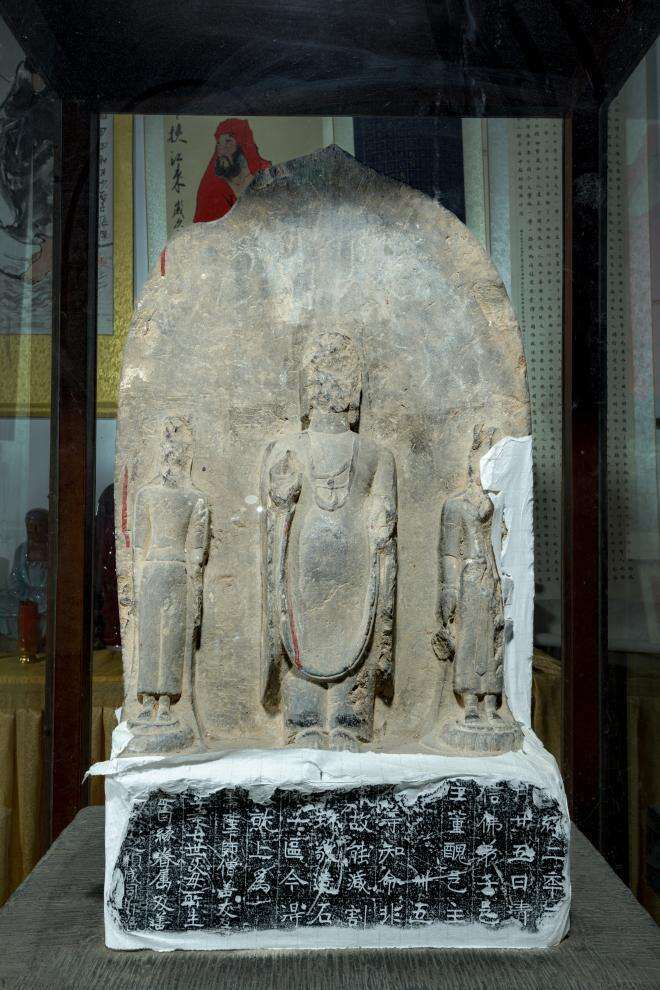
- Stele of the Harmonious Convergence of Three Teachings and Nine Schools Inscription and Praise (Hunyuan Sanjiao Jiuliu Tu Zan Bei): In a unique way, integrates the three sages representing China’s Confucianism, Buddhism, and Daoism – Confucius, Śākyamuni, and Laozi – into one figure within a single image (Hunyuan Tu). It profoundly interprets the “harmony and unity” (He He) and inclusivity of Chinese culture. This image has also become the design source for the current Shaolin Temple logo.
- Highlight Examples:
These steles, standing throughout the monastery grounds, are no longer just the private memory of Shaolin Temple. Due to their historical weight, content richness, artistic excellence, and outstanding universal value, they have become a “Open-air Archive” and a “Civilization Database” treasured by all humanity.
II. Guarding Millennia of Memory: The Challenges of Preservation and Transmission
Having weathered over a thousand years of storms, these silent stones face severe survival challenges. The natural weathering of the stone material, potential damage from historical conflicts, erosion by environmental factors (rainwater, acid rain, freeze-thaw cycles, dust, air pollution), and even improper touching or scratching are slowly erasing these precious texts and images.
To protect this collective memory heritage of humanity, Shaolin Temple and cultural relics protection agencies have made unremitting efforts:
- Scientific Assessment and Classified Protection: Scientific evaluation and documentation of the material, preservation status, and deterioration of each stele. Targeted protection plans are formulated and implemented based on different risk levels and environmental exposure (e.g., outdoors, embedded in walls, indoors).
- Physical Protective Measures: For steles of extremely high value or fragility, methods such as installing glass protective cases and setting up isolation barriers (e.g., protective facilities surrounding the Pagoda Forest) are employed to minimize direct harm from human and environmental factors. Necessary chemical consolidation treatments are applied to outdoor steles.
- Documentation and Rubbing: Historically, rubbing techniques were crucial for preserving stele inscriptions. In modern times, systematic rubbing reproduction and the establishment of complete archival records ensure that the information carried by the steles endures even if the stones themselves are damaged.
- Systematic Research and Value Interpretation: Through academic research (collaboration with universities), convening international symposia, and publishing monographs and research collections (featuring selected rubbing reproductions or annotated transcriptions), the interpretation of the inscriptions is continuously deepened, uncovering their historical, cultural, and artistic value.
This conservation work protects not just stone, but the thoughts, history, art, and the entire thread of civilizational dialogue engraved upon it. If you also wish to participate in the preservation of the Shaolin steles, you can support through the official Shaolin global e-commerce platform. 10% of the proceeds from each item purchased will be donated to the Shaolin Temple Cultural Relics Restoration Fund.
III. The Path to the Summit: Convergence of Cultural Icons and World Heritage
The inscription of the Shaolin Temple Stele Collection on the Memory of the World Register marks another dazzling appearance for Shaolin culture on the global stage of cultural heritage. It resonates with another honor held by Shaolin Temple – its inscription in 2010 as a component of the World Heritage site “Historic Monuments of Dengfeng in ‘The Centre of Heaven and Earth’“.
Thus, Shaolin Temple has now secured two crowns from UNESCO’s three flagship heritage programs:
- World Heritage List: “Historic Monuments of Dengfeng in ‘The Centre of Heaven and Earth’” (including the Shaolin Temple complex) (2010)
- Memory of the World Register: Shaolin Temple Stele Collection (566–1990) (2024)
Now, it stands one step away from the symbolic pinnacle honor of “Three Flowers Gathering at the Summit” (San Hua Ju Ding), missing only:
- Representative List of the Intangible Cultural Heritage of Humanity: Shaolin Kung Fu (Already a Chinese National-Level Intangible Cultural Heritage)
Shaolin Kung Fu, as one of the most globally influential cultural symbols of Shaolin Temple, was listed among China’s first batch of National-Level Intangible Cultural Heritages back in 2006. It is far more than just martial techniques; it is a complete traditional cultural system integrating Chan mental discipline, unique martial arts skills, meridian theory, and health-preserving wisdom. Experts, cultural scholars, and all sectors of society continuously advocate for advancing the nomination of Shaolin Kung Fu to the Representative List of the Intangible Cultural Heritage of Humanity. This effort is not only about confirming its unique cultural value but also about promoting the essence of Eastern mind-body cultivation culture—the unity of Chan and martial arts (Chan Wu He Yi)—worldwide.
Visit the official Shaolin Games website to support the nomination of Shaolin Kung Fu as Intangible Cultural Heritage -> Click Here
IV. The Pulse Across Time: Listening to the World Language of Stone on Songshan
Why is the Shaolin Temple Stele Collection so important?
Because they tell not just the story of one monastery, but humanity’s shared past and future.
- They are the Hard Drive of Human Civilization: During the long eras when paper archives were scarce or perishable, stone inscriptions, with their indelible nature, preserved the social panorama, intellectual currents, and codes of cultural exchange spanning a millennium.
- They are a Physical Manifesto of “Harmony in Diversity”: Traces left by people of different eras, different languages, and different religious beliefs coexist peacefully here, silently proving the possibility of civilizational dialogue and harmonious coexistence.
- They are the Cornerstone of National Spirit and Collective Memory: The records of defending the homeland (e.g., Thirteen Cudgel Monks rescuing the Prince of Qin), the wisdom of Chan, and prayers for peace etched within these stones form a vital part of the Chinese nation’s core spirit and collective memory.
Epilogue: The Eternal Dialogue
As dusk descends and the ancient temple bells resonate melodiously, the stele within the monastery emit a palpable aura of history in the stillness. Standing or reclining, they are inscribed not only with bygone years but with a spirit of cultural dialogue that transcends geographical boundaries.
UNESCO’s inscription of the Shaolin Temple Stele Collection on the Memory of the World Register is the highest tribute paid to the enduring vitality of this spirit. More eloquently than words, they declare to the world: Culture knows no borders; exchange and mutual learning are the inexhaustible driving forces for the survival and development of civilization. Protecting these “talking stones” is protecting humanity’s shared memory and wellspring of wisdom. It anchors a profound cornerstone for building a community with a shared future for mankind amidst the turbulent currents of our era.
Entering Shaolin Temple, why not slow your pace and pause before a stele? The mottled characters, the fluid carved lines, the mysterious symbols – each form is a historical fragment, narrating stories from a millennium ago, while simultaneously questioning how we cherish the past and write the future.
Protect the world’s memory. Guard the shared roots of humanity.
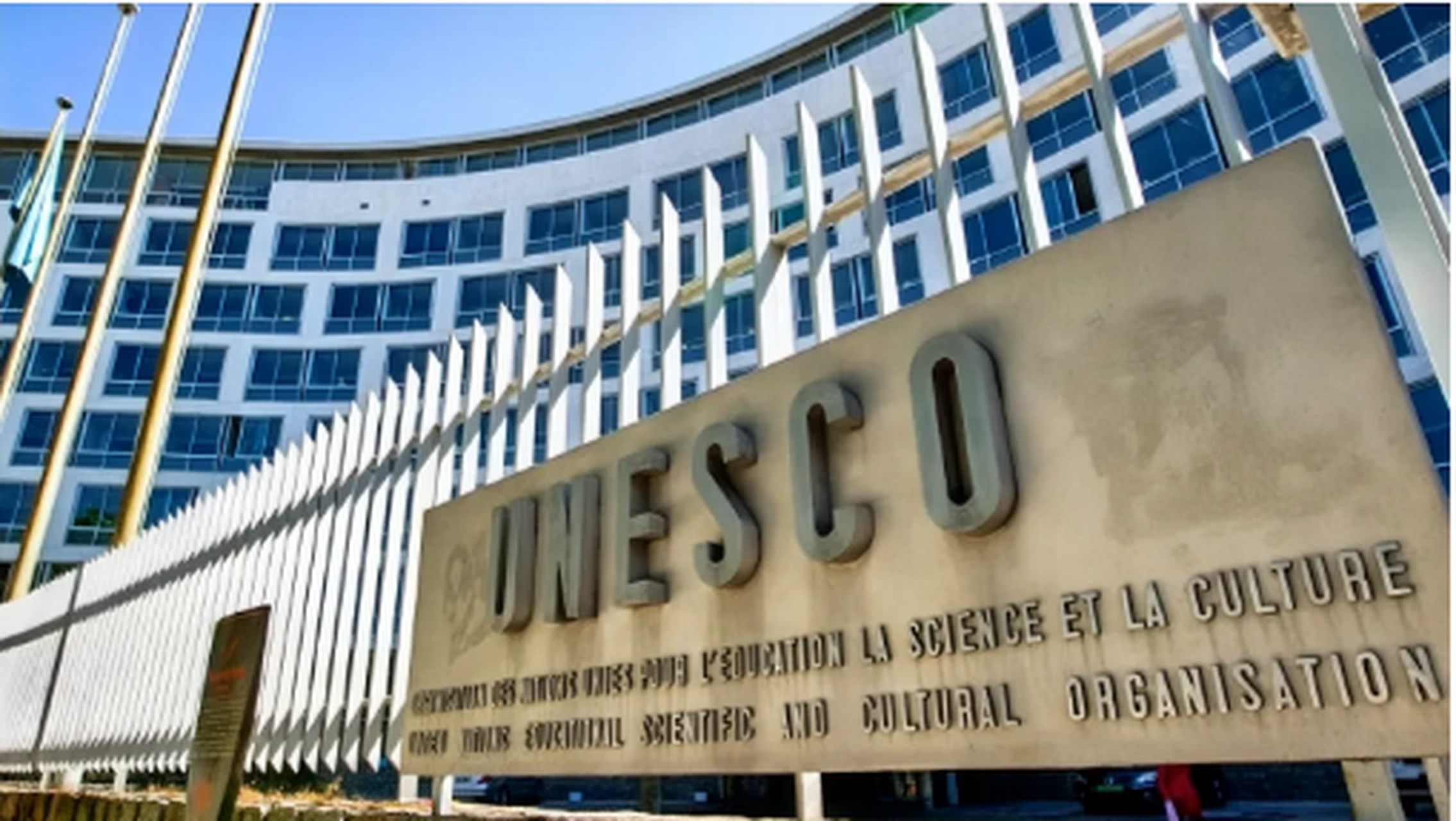
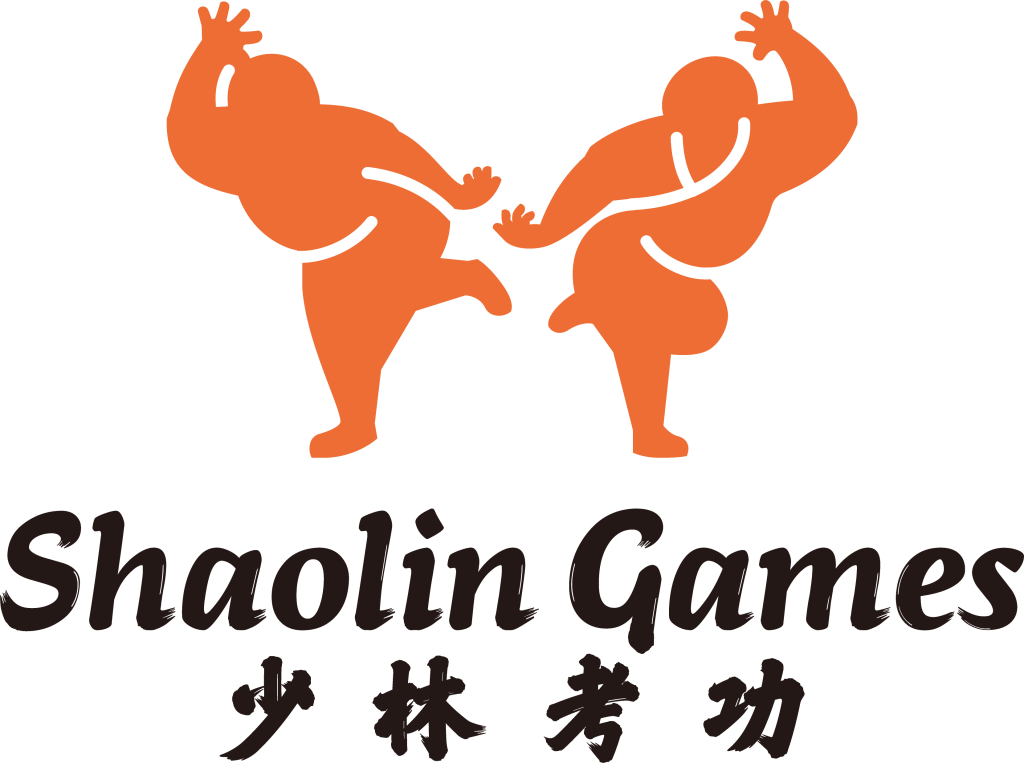
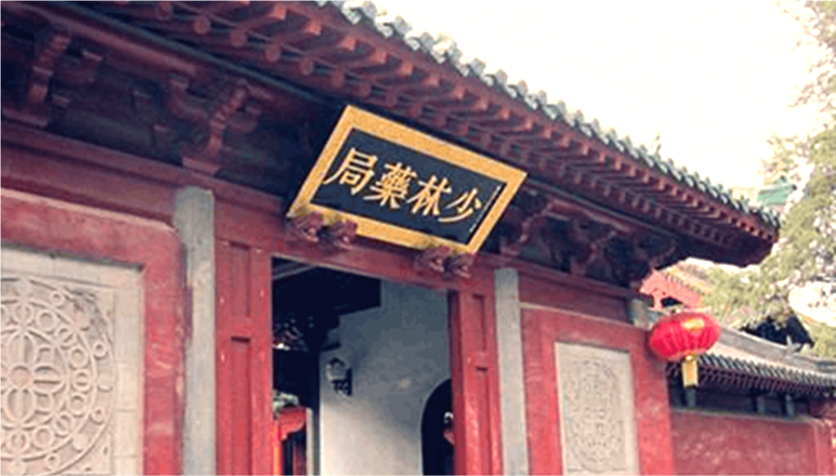
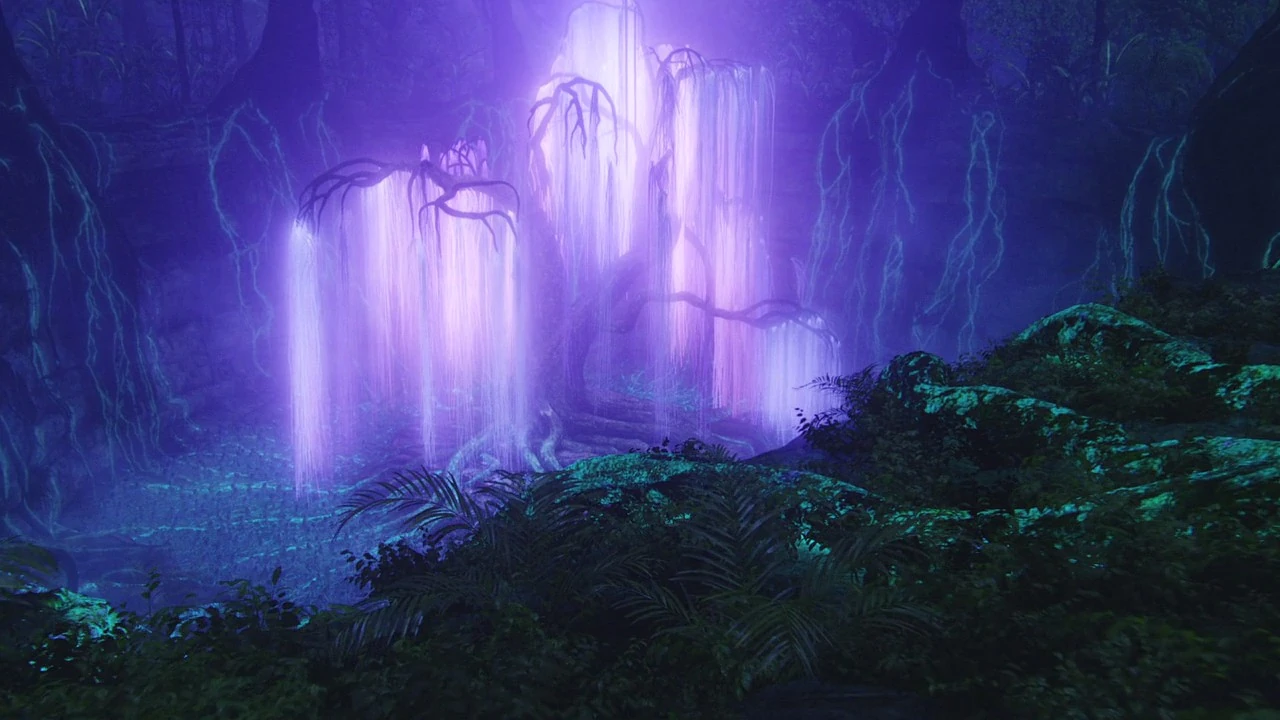

Leave a Reply